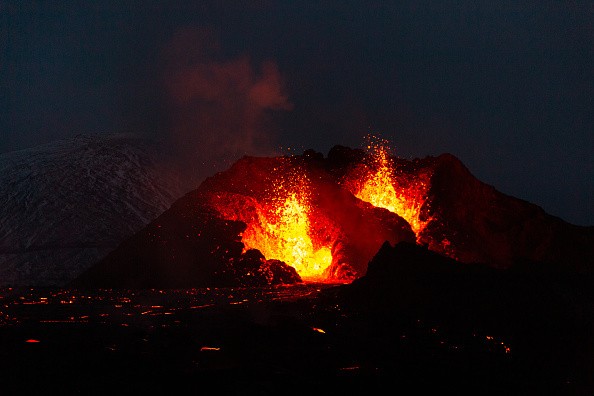Scientists dug deep into the hypothesis that carbon dioxide from volcanic eruptions in India contributed to killing off the dinosaurs. If you inquired from Joe Blow on the street how the dinosaurs vanished, he would most probably say an asteroid cleared them out, but the truth is a bit more complicated than that.

The Deccan Traps
At this phase, they were well aware that about 66 million years ago a large asteroid about 15 to 10 kilometers vast struck the earth. They even noticed where it had struck: the "Chicxulub crater," sited in Yucatan peninsula in Mexico. It is about 150 kilometers vast. Quite hard to miss.
Though a lot of researchers still subscribe to the theory that a huge volcanic range, found in India, was the major cause of the Cretaceous-Tertiary extinction episode that wiped off the dinosaurs. That volcanic range, called the Deccan Traps, is at the heart of that discussion.
They understand that the lava was spewing from the Deccan Traps during the time in which the dinosaurs went missing, though they don't know the exact timing of those eruptions or if the carbon dioxide discharge into the atmosphere was crucial enough to result in the kind of global warming consistent with extinction occurrences in the past.
The Fifth Extinction Event
A new study by a multi-institutional group led by researchers from the Graduate Center of the City University of New York has tried to weigh how much carbon dioxide was discharged into the atmosphere, expecting to know the part volcanoes played in the fifth extinction incident. The outcomes? Volcanic eruptions most possibly were not a major cause of dinosaur extinction.
The team examined Deccan Traps CO2 budgets that occurred simultaneously with the warming incidents, explained a Ph.D. student in the Graduate Center CUNY's Earth and Environmental Science program, Andres Hernandez Nava, and they discovered that carbon outgassing from lava volumes solely could not have led to that point of global warming.
Impacts of Deccan Traps Discharge
The team used ion beams and lasers to weigh the carbon dioxide of frozen magma caught inside Deccan Traps crystals from the end-Cretaceous times and conducted modeling of that climate in an attempt to check the impacts of Deccan Traps discharge on surface temperatures.
The data disclosed that most possibly the Deccan Traps played a role in the temperature increase of about 3 degrees Celsius. Significant, definitely, though most likely not sufficient to cause a fifth extinction event.
"A huge rock got them" in short, as the researcher's 5-year-old son would always say when asked who killed the dinosaurs.

The Enormous Volcanoes
Princeton geoscientists Gerta Keller and Blair Schoene headed an international group of scientists who have compiled the initial high-resolution timeline for the outbursts in India's Deccan Traps. Their study released in the journal Science, February 22nd.
Everybody has learned that the dinosaurs died from an asteroid that struck the Earth, explained Blair, an associate professor of geosciences.
What a lot of people don't understand is that in the last 500 million years there have been several other mass extinctions, and several of them happened simultaneously with huge volcanic spews from the enormous volcanoes dupped as flood basalts or huge igneous provinces.
Related Article : Scientists Finally Unlock Dinosaur DNA
For more news, updates about dinosaurs and similar topics don't forget to follow Nature World News!
© 2025 NatureWorldNews.com All rights reserved. Do not reproduce without permission.





